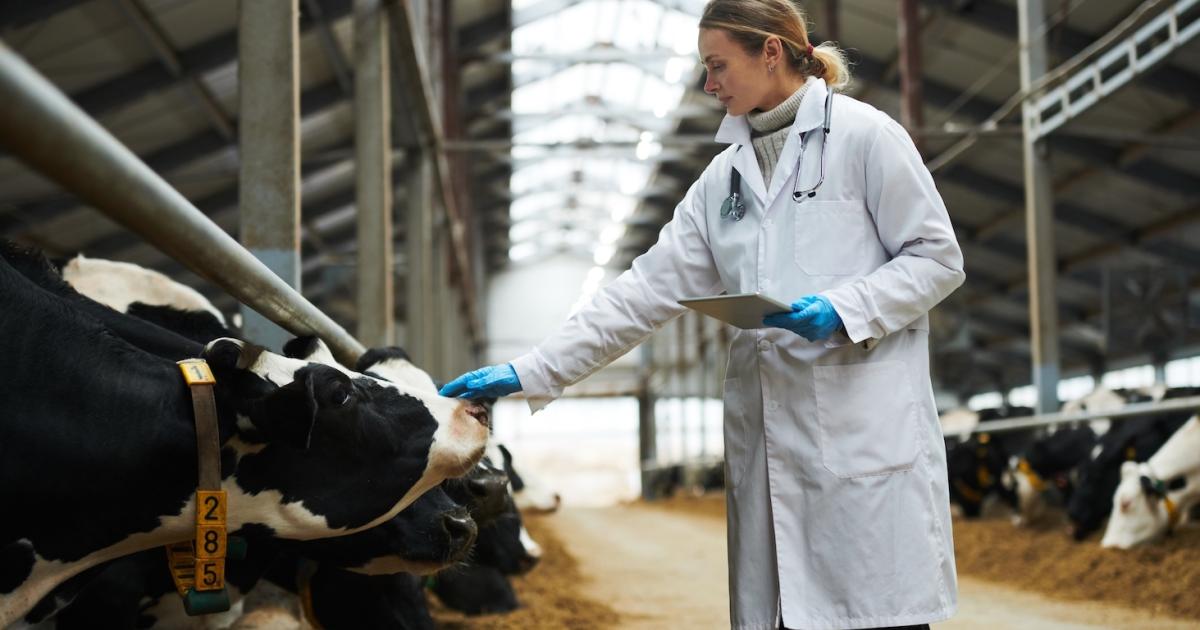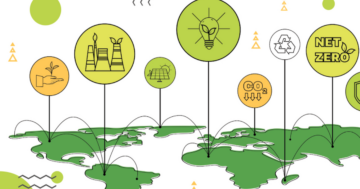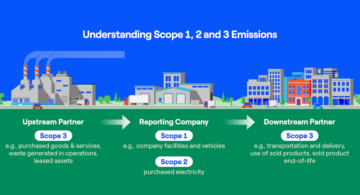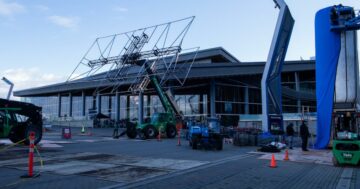
The food system has its own polarization problem. Regardless of which side of the aisle you sit on, you likely agree that our political system is broken. In the sustainable food world, almost everyone agrees that our food system is dysfunctional, yet infighting within the movement has intensified. The idealized visions of fixing the food system with a single philosophy — the two leading camps being technology-driven and nature-based — prevent the compromise and collaboration required to drive change across the globally complex food system.
And each side is getting more entrenched. “It’s very similar to politics,” said Ali Khademhosseini, CEO of the cultivated meat company Omeat. “If you can’t listen, then you cannot understand.”
We need to recognize that the status quo is a shared enemy and that a shared goal is a food system that works for both people and the planet. When we recognize more similarities between the technology-driven and nature-based camps than differences, we will be best able to enact change.
More similarities than differences
During a session on cellular and regenerative agriculture at the See Change Sessions in Vermont, I was struck by the similarities in approaches, criticisms and misperceptions of regenerative and cellular agriculture (such as cultivated meat).
Critiques of both approaches included how the processes weren’t scalable, were more expensive and not technically feasible today. They also each face similar challenges in the market and public perception, such as underfunding, distrust in the science, lack of skilled labor and a bias for the status quo.
Given the similarities, there needs to be more collaboration versus competition between technology and nature to solve our food challenges.
Opportunities for collaboration
The See Change Sessions’ goal is to bring together different views on sustainability challenges and figure out how to tackle them together. Cellular and regenerative agriculture was a perfect test case for this working group.
On the macro level, there were many ideas around shifting the economic environment by reducing the adverse subsidies plaguing the food system that could help both approaches. Both camps could also benefit from collective lobbying to increase federal funding and policy support for these alternatives.
Omeat’s breakthrough increases the economic value of both cultivated meat and regenerative agriculture. It ties them together in a value chain.
For collaboration between the two, regenerative agriculture byproducts could be used as inputs for the growth medium used in meat cultivation, which would open market access and build sustainable value chains. Khademhosseini is an entrepreneur showing how this is possible with Omeat.
An example to lead the way
Omeat showcases how cutting-edge technologies can incentivize and enable the natural regeneration of our agricultural landscapes. Its first commercial product, Plenty, is a humane and affordable replacement for Fetal Bovine Serum (FBS) in cultivated meat manufacturing.
FBS has traditionally been used as the foundational material in cultivated meat production, but it is collected during the slaughter of pregnant cows. Many cultivated meats using it as an ingredient do not address the animal welfare concerns of its origins in the beef production system.
Plenty replaces FBS with the cows’ plasma — which contains the platelets and other growth factors crucial for tissue growth — from a live cow’s blood once a week over the cows’ natural life. The process is akin to how humans donate plasma for use in healthcare.
This process is superior in two ways. First, using this plasma donation approach, Omeat can create 20 times more meat per cow than traditional slaughter and eliminate the slaughtering process from beef supply chains altogether.
Second, Omeat’s approach enables nature regeneration in two ways. First, the cattle ranchers supplying Omeat with bovine plasma can maintain or grow their revenues while dramatically reducing the number of cows they keep on their land as they can get recurring revenue from each cow instead of a one-time sale for slaughter. With fewer cows needed, regenerative grazing practices are more readily adopted, and there is a reduction in methane emissions from the reduced herd size. It also could eliminate feedlots — the step before slaughtering in the beef supply chain where the cows are fed and “finished.” Feedlots are hotspots of negative impacts and pollution in today’s food system.
Omeat is creating a regenerative value chain for its cultivated meat product, combining technological innovation with the nature-positive approach. Omeat’s breakthrough technology increases the economic value of both cultivated meat and regenerative agriculture. It ties them together in a value chain. It brings regenerative agriculture people to the cellular agriculture table.
“Omeat is trying to make an impact as fast as possible,” Khademhosseini said. “We recognize that it is not a zero-sum game.”
If we can find opportunities for compromise and collaboration, we will grow the whole pie and create room for both in the future food system.
- SEO Powered Content & PR Distribution. Get Amplified Today.
- PlatoData.Network Vertical Generative Ai. Empower Yourself. Access Here.
- PlatoAiStream. Web3 Intelligence. Knowledge Amplified. Access Here.
- PlatoESG. Carbon, CleanTech, Energy, Environment, Solar, Waste Management. Access Here.
- PlatoHealth. Biotech and Clinical Trials Intelligence. Access Here.
- Source: https://www.greenbiz.com/article/combining-best-regenerative-and-cellular-agriculture
- :has
- :is
- :not
- :where
- 20
- 7
- a
- Able
- About
- access
- across
- address
- adopted
- advancing
- affordable
- Agricultural
- agriculture
- almost
- also
- alternatives
- altogether
- an
- and
- animal
- appeared
- approach
- approaches
- ARE
- around
- article
- AS
- At
- BE
- Beef
- been
- before
- being
- benefit
- BEST
- between
- bias
- blood
- both
- Bottom
- breakthrough
- bring
- Brings
- Broken
- build
- but
- by
- CAN
- Can Get
- cannot
- case
- cellular
- ceo
- chain
- chains
- challenges
- change
- collaboration
- Collective
- combining
- commercial
- company
- competition
- complex
- compromise
- Concerns
- contains
- could
- create
- Creating
- crucial
- cultivation
- cutting-edge
- Cutting-Edge Technologies
- differences
- different
- distrust
- do
- donate
- donation
- dramatically
- drive
- during
- dysfunctional
- each
- Economic
- economic value
- eliminate
- Emissions
- enable
- enables
- entrenched
- Entrepreneur
- Environment
- Ether (ETH)
- Event
- Every
- everyone
- example
- expensive
- Face
- factors
- FAST
- feasible
- Fed
- Federal
- fewer
- Figure
- Find
- First
- food
- For
- from
- future
- game
- get
- getting
- Globally
- goal
- Group
- Grow
- Growth
- healthcare
- help
- How
- How To
- HTTPS
- humane
- Humans
- i
- ideas
- if
- Impact
- Impacts
- in
- incentivize
- included
- Increases
- Innovation
- inputs
- instead
- IT
- ITS
- jpg
- Keep
- labor
- Lack
- Land
- lead
- leading
- LEARN
- Level
- Life
- likely
- Line
- live
- lobbying
- Macro
- maintain
- make
- manufacturing
- many
- Market
- material
- Meat
- medium
- Meets
- methane
- methane emissions
- more
- Natural
- Nature
- Need
- needed
- needs
- negative
- news
- NIH
- node
- number
- of
- on
- once
- open
- opportunities
- or
- originally
- origins
- Other
- our
- out
- over
- own
- part
- PBS
- People
- per
- perception
- perfect
- philosophy
- planet
- Plasma
- plato
- Plato Data Intelligence
- PlatoData
- Plenty
- policy
- politics
- Pollution
- possible
- practices
- prevent
- Problem
- process
- processes
- Product
- Production
- professionals
- protect
- public
- readily
- recognize
- recurring
- Reduced
- reducing
- reduction
- Regardless
- regeneration
- regenerative
- Regenerative Agriculture
- replacement
- required
- revenue
- revenues
- Room
- Said
- sale
- scalable
- Science
- see
- session
- shared
- SHIFTING
- showing
- side
- similar
- similarities
- single
- sit
- Size
- skilled
- SOLVE
- Status
- Step
- strategies
- subscribe
- such
- superior
- supply
- supply chain
- Supply chains
- supplying
- support
- Sustainability
- sustainable
- system
- table
- tackle
- technically
- technological
- Technologies
- Technology
- test
- than
- that
- The
- The Future
- their
- Them
- then
- There.
- These
- they
- this
- thursday
- Ties
- times
- tissue
- to
- today
- today’s
- together
- traditional
- traditionally
- trying
- two
- understand
- use
- used
- using
- value
- Vermont
- Versus
- very
- views
- visions
- want
- was
- ways
- we
- week
- Welfare
- were
- when
- which
- while
- whole
- will
- with
- within
- working
- Working Group
- works
- world
- would
- yet
- you
- Your
- zephyrnet








